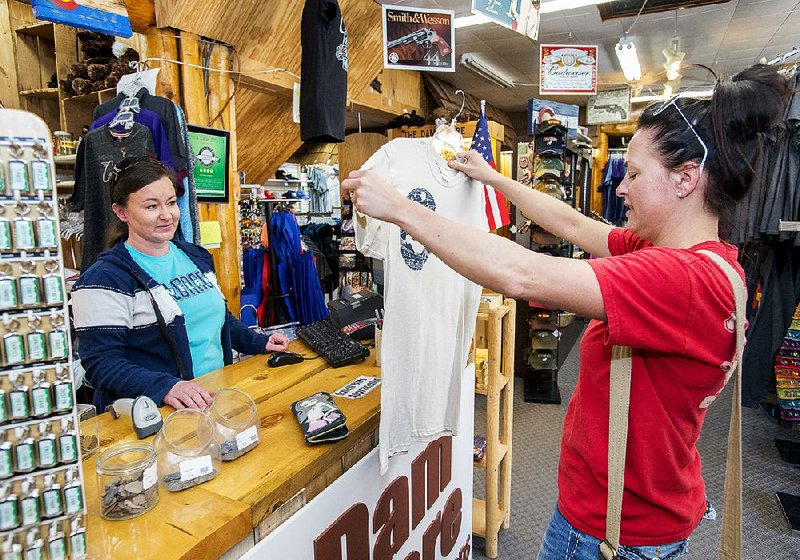WASHINGTON -- American consumers ramped up their spending last month in a sign of robust health heading into the Christmas shopping season.
Retail sales rose 0.8 percent in October, after an upwardly revised 1 percent gain in September, the Commerce Department said Tuesday. The two-month increase was the largest since the spring of 2014.
The numbers suggest that the economy may grow more quickly in the final three months of the year than many economists had expected. Retail sales are closely watched as a sign of consumer health. Consumer spending makes up about 70 percent of the economy.
"The consumer is in good shape," said Michael Gapen, chief U.S. economist at Barclays in New York. "The pace of household spending is fairly solid. We expect a slight acceleration this quarter from the third-quarter rate."
Steady hiring and emerging signs of solid pay increases have made Americans more confident and willing to spend. The unemployment rate fell last month to a low 4.9 percent and in October, workers saw the biggest annual pay gain since the end of the recession.
And while many companies, such as Dunkin Donuts, blamed their own weak sales figures in the late summer and fall on consumer concerns surrounding the election, Tuesday's figures show that the presidential campaign had little overall effect.
"If electoral uncertainty were restraining activity prior to last Tuesday, it is nowhere apparent in the consumer spending data," JPMorgan Chase economist Michael Feroli said.
Revisions to September and August data indicate that consumers spent more than previously estimated in the July-September quarter, Feroli said. That means growth in the third quarter may have been as high as 3.2 percent, he estimated, above the 2.9 percent figure reported last month.
"A strong October following a strong September is encouraging," Tom Simons, a senior economist at Jefferies LLC, said before the report. "The labor market continues to be strong, and wage growth appears to be accelerating."
Some of the biggest sales increases were in autos and gasoline, with higher prices increasing gas-station sales. Even excluding those categories, however, sales rose 0.6 percent in October and 0.5 percent the previous month.
Auto purchases remained robust, climbing 1.1 percent after a 1.9 percent increase.
That's consistent with industry data that showed the torrid demand is continuing. Purchases of cars and light trucks grew at a 17.9 million annualized rate, the strongest pace since November of last year, after 17.7 million the previous month, according to Ward's Automotive Group.
Sales of home and garden supplies also rose 1.1 percent in October, a positive sign that more Americans are remodeling and expanding their homes.
Home Depot, the nation's biggest home-improvement chain, raised its outlook for the year Tuesday after beating Wall Street expectations handily. Customer transactions jumped, as did the amount they spent on each visit, the company said.
Most other retailers also saw healthy increases: Grocery stores, health and personal-care outlets, sporting goods retailers, clothing stores, and online and catalog retailers all reported strong sales.
Online and catalog retailers are continuing to seize market share from older-line outlets such as department stores. Online and catalog sales have increased 12.9 percent in the past year, much faster than the 4.3 percent gain for all retailers. Department stores, meanwhile, have seen their sales plunge 7.3 percent in the past 12 months.
Furniture stores were one of the few to report a drop in October, with sales falling 0.9 percent.
Steady hiring may be a factor in increased spending. Employers have added about 175,000 jobs a month this year, down from last year's pace but still enough to push unemployment even lower over time.
That appears to be adding to consumer confidence, which has been mostly healthy in recent months. A measure of consumer sentiment by the University of Michigan rose in the first half of November.
Even with solid growth in the October-December quarter, the economy has been weak this year. It expanded at just a 1.1 percent pace in the first six months of 2016. It accelerated to a 2.9 percent pace in the July-September quarter.
Even with a healthier expansion in the fourth quarter, growth may not reach 2 percent for the full year.
Information for this article was contributed by Christopher S. Rugaber of The Associated Press and by Shobhana Chandra of Bloomberg News.
Business on 11/16/2016
